What’s in a name?
When Lexus took the wraps off the 2022 IS 500 F SPORT Performance earlier this year, it raised more questions than it answered primarily because of what it was called. We are accustomed to F SPORT products – aka the sporty upgrade trim available on most every model – as well as the F products that deliver the high end of performance under the Lexus umbrella. Enthusiasts struggled to define what “F SPORT Performance” meant, and we even reached out to Lexus for clarification. The answer is that F SPORT Performance is a new mid-tier performance level and the 2022 IS 500 is the first product to wear the badge.
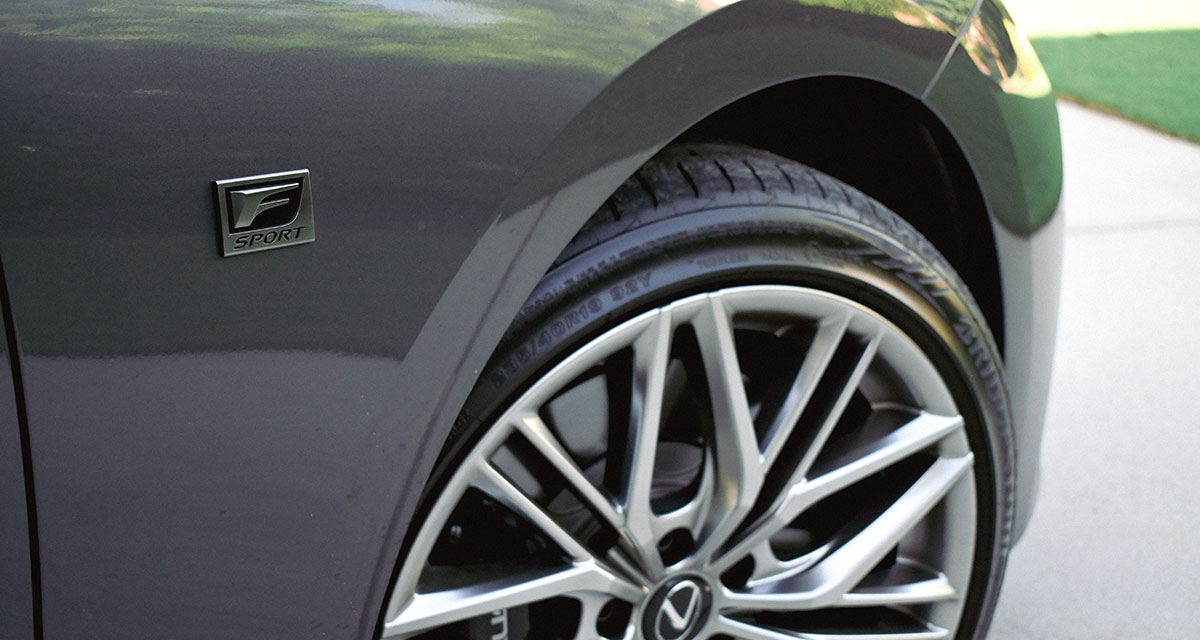
Of course, the inevitable comparisons to the original IS F and the RC F began, as specs and hardware were examined in detail. Would it be faster or slower than these cars? Better or worse to drive? Less expensive? It seemed everyone had a lot to say about the IS 500 in comparison to those two F products, and yet, all of these analogies are wrong.
It didn’t take much time in the driver’s seat before I realized that the closest point of comparison with the IS 500 is actually the GS F — not the IS F or RC F. And of course that would make sense — they both share Lexus’ “New N” architecture, the same 5.0L V8 sits under the hood, power is routed through the same direct-shift 8-speed automatic, and they are similar in weight (though the IS 500 is about 150 lbs. lighter).
8 vs 10 Speeds
The IS 500 uses the same eight-speed sport direct-shift automatic as the RC F and GS F, meaning this car’s DNA does come from F products. The other option would have been the ten-speed automatic from the LC 500, but would that have been a good fit?
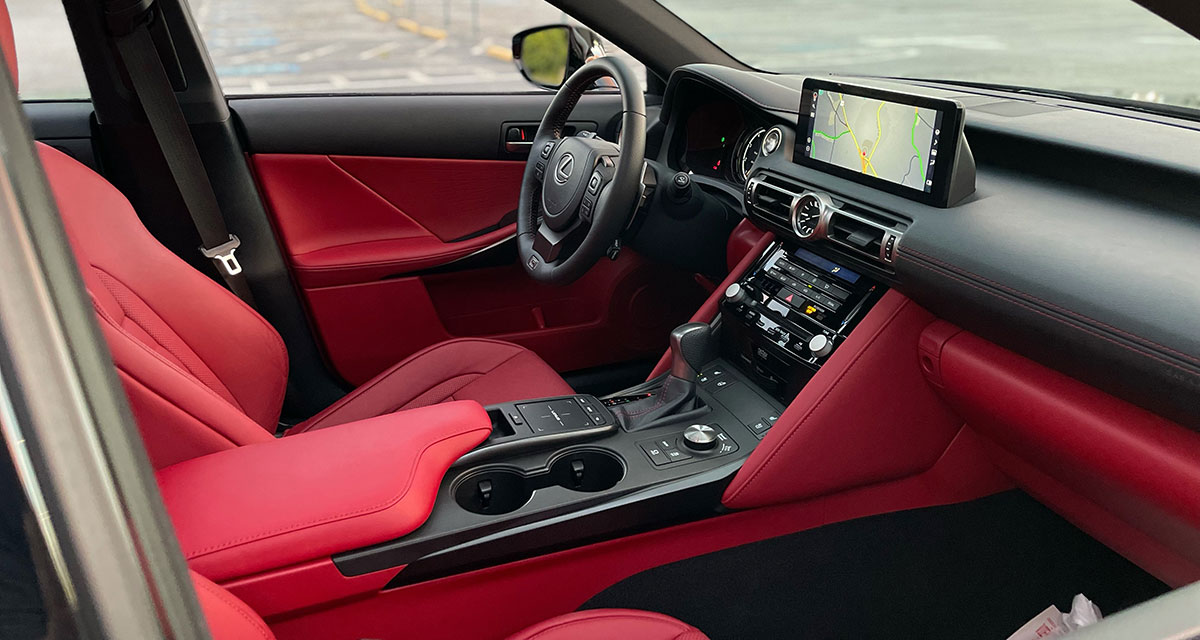
After pushing LC 500s around Eagles Canyon Raceway in June, my love affair with the coupe is hard to deny. For driving on the track, the 10AT shifts faster, blips and crackles on downshift, and sounds better while it works. In day-to-day driving off the track, the transmission can be less fluid at lower and mid-range RPMs, and Lexus has put significant work into refining the programming every model year since launch.
There is one critical consideration, and it’s likely the reason the IS 500 uses the Lexus sport direct-shift 8AT: The 10AT does not have a transmission cooler or engine oil cooler, and under prolonged stress and hard driving, the LC 500 will let you know it has approached its limits. In full F applications, the 8AT has both an engine oil and transmission cooler, but here in F SPORT Performance guise, the IS 500 only packs the transmission cooler. We’ll take something over nothing, and it stands to reason that the 8AT could be more reliable long term under hard use for this reason. It’s also a smoother, more natural operator in real world use.
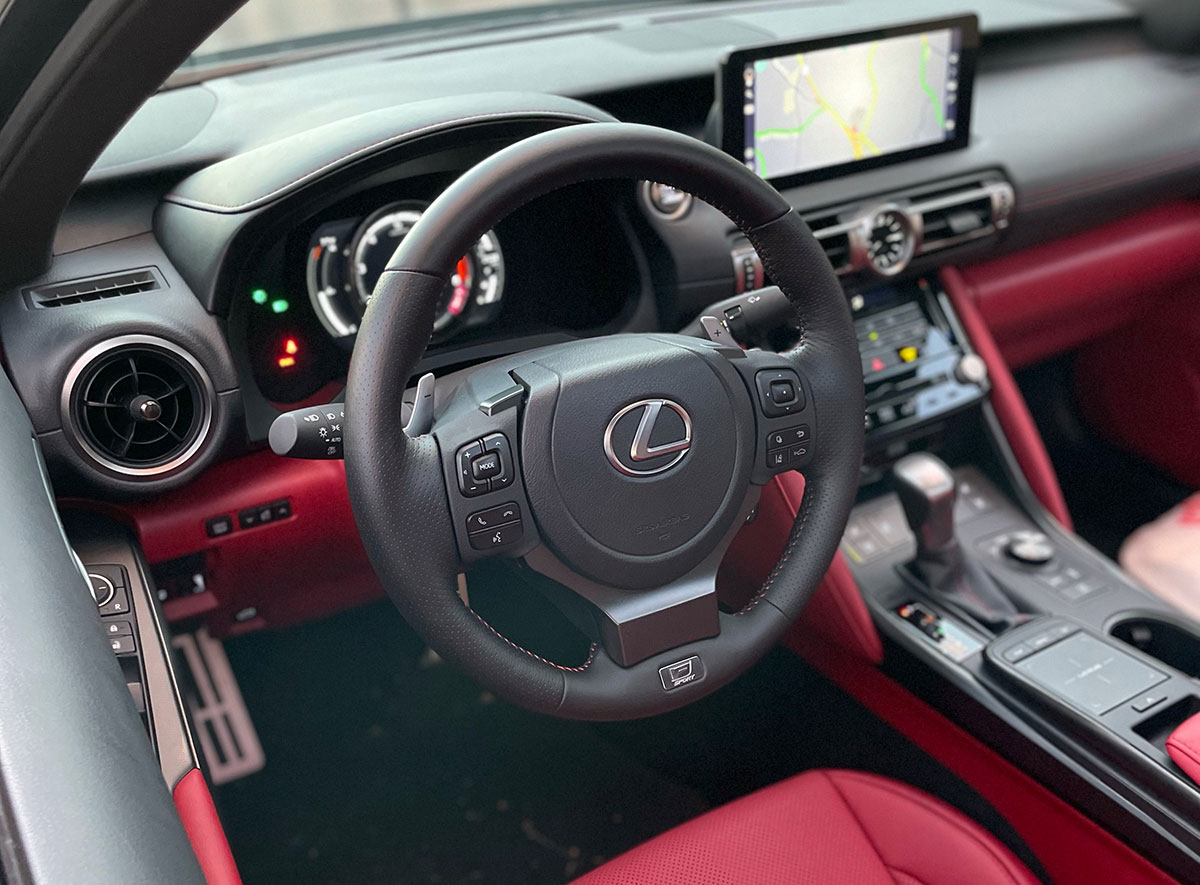
I like the way the 10AT shifts and behaves on the track. I like the 8AT better for day-to-day driving, and because it has the necessary mechanicals in a performance car like the IS 500 versus a GT car like the LC 500. I wish I could combine my favorite aspects of both, but if forced to choose one, I would take the 8AT in the IS 500.
(I can see a future where Lexus F cars might offer the 10AT paired with both a transmission cooler and engine oil cooler. It’s plausible that such a transmission might be one of the things that differentiates F SPORT Performance against full-bore F models.)
Engine and Performance
Lexus’ 2UR-GSE 5.0L V8 has turned out to be one of the automotive industry’s iconic engines: intoxicating sound, linear power delivery, rock-solid reliability, and surprisingly forgiving efficiency if you can keep your right foot in check.
This engine is also the most critical element of the IS 500’s identity once you’re behind the wheel, and in a very good way. There have been calls for a twin-turbo V6 or some kind of turbocharging or hybrid boost, but after driving the IS 500, you will want nothing other than the naturally aspirated V8.
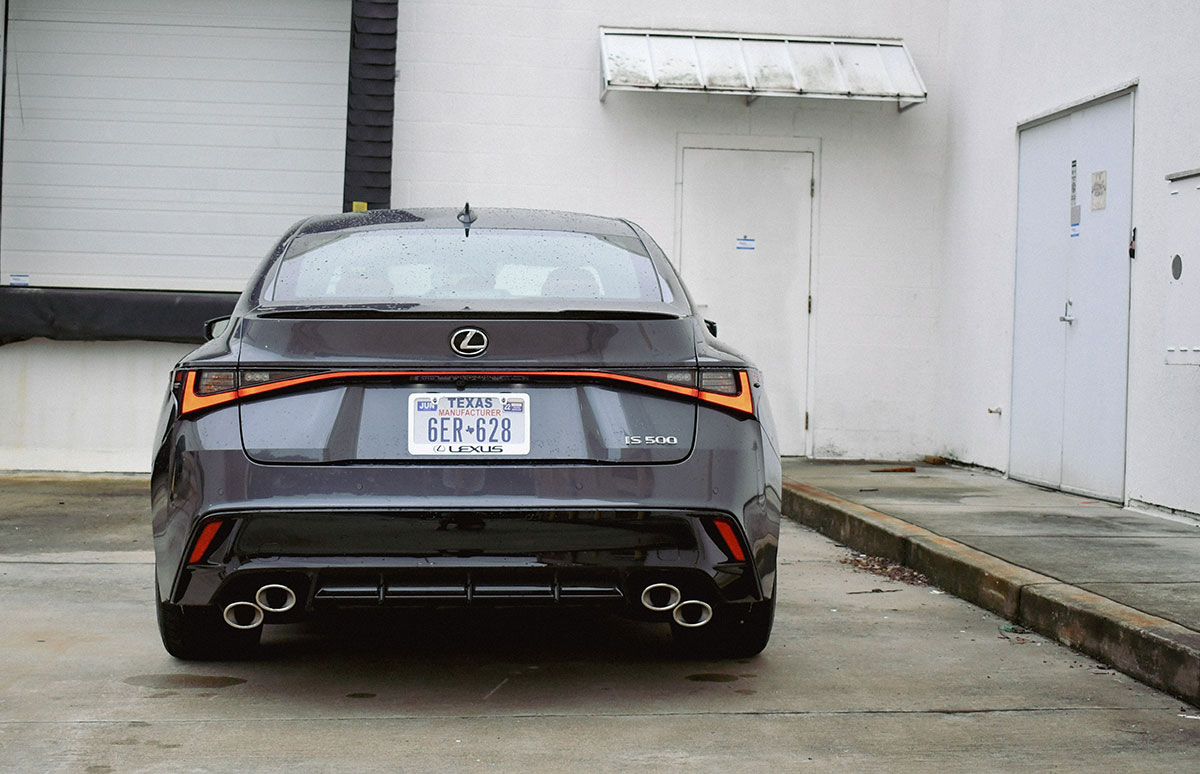
Let’s be blunt: The twin turbo V6 in the LS 500 is an engine that delivers the sort of imperceptible shifts and effortless torque you want in a two-and-a-half-ton luxury sedan. It would need a lot of fine-tuning to be the right fit for a performance vehicle though: a higher redline, sharper throttle response and reduced turbo lag as a few changes off the top. It’s possible too that there may never be a Lexus turbocharged V8 – ever. Such rumors have been the point of much consternation over the last decade, with the most recent speculation suggesting the Lexus next-generation V8 program might be off the table. Last, we have yet to see a true performance hybrid from Lexus, and the 14-year-old IS platform wouldn’t really be the right vehicle for such a debut.
That leaves the 5.0L V8, and I’ll say again: You aren’t going to want anything else.
One of the best parts of the IS 500 is its “Dr. Jekyll and Mr. Hyde” personality, and much of that is due to the engine. In the NORMAL drive mode and with a light touch, the IS 500 is actually the very best version of the IS, better than the IS 300 and the IS 350 due mostly to smoothness of this engine around town. There is an effortless authority about driving a Lexus V8, and it is well captured in the IS 500.
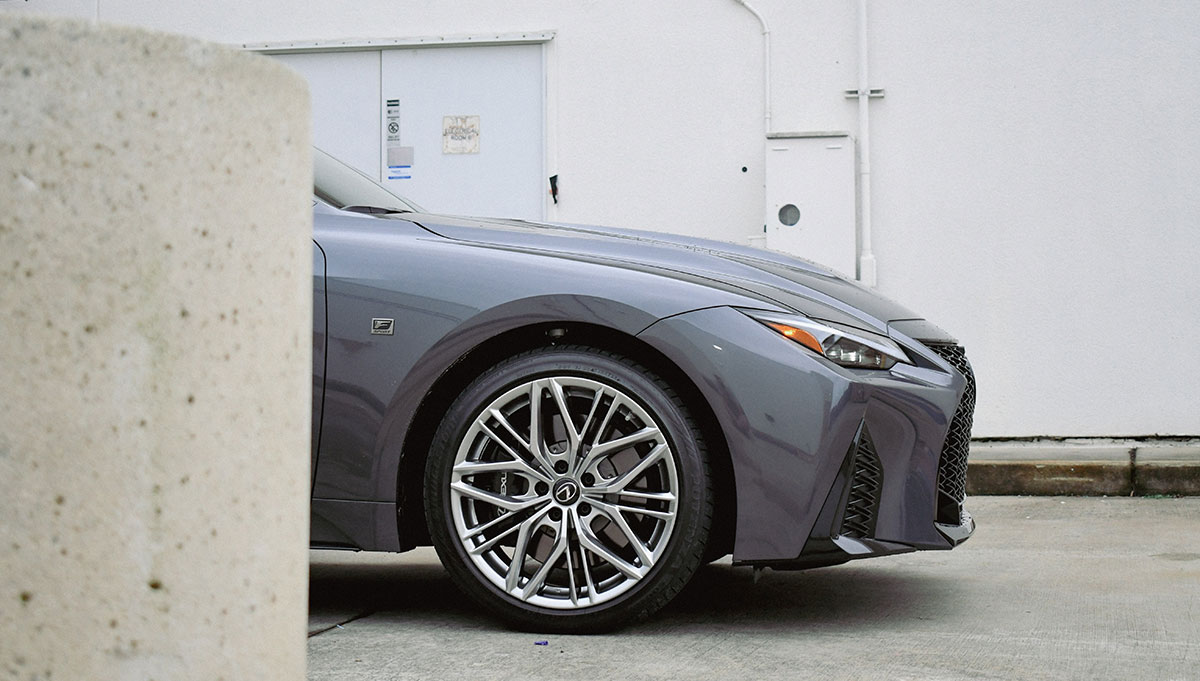
Scroll the Drive Mode Select over to SPORT or SPORT+, and its performance intentions become readily apparent. Your first indication is the secondary engine intake opening around 3,500RPM. You hear it and you feel it, and it sounds righteous. Slam your foot to the floor, and the car and the IS 500 leaps off the line, building power so quickly and so steadily that you’re approaching triple digits with just a single inhale and exhale.
Every one of the IS 500’s competitors are offered with a turbo engine. We’re used to reading about Lexus vehicles accelerating slower due to their lack of forced induction – leave the IS 500 off that list. From throttle tuning to tire selection, Lexus has done a fantastic job managing how the IS 500 delivers power. The tires will spin, but only for a fraction of a second as they find grip and begin to deliver torque to tarmac. The car’s low weight, quick shifting 8AT and horsepower create a formula that doesn’t need forced induction or electricity to keep up.
There is a certain drama and theater to it too – the IS 500 isn’t as burly sounding as the LC 500, but the power delivery always sends you into the right gear as the intake system inhales, the engine roars and the exhaust snarls all while pulling like a bullet train. The more you do it, the more you love it.
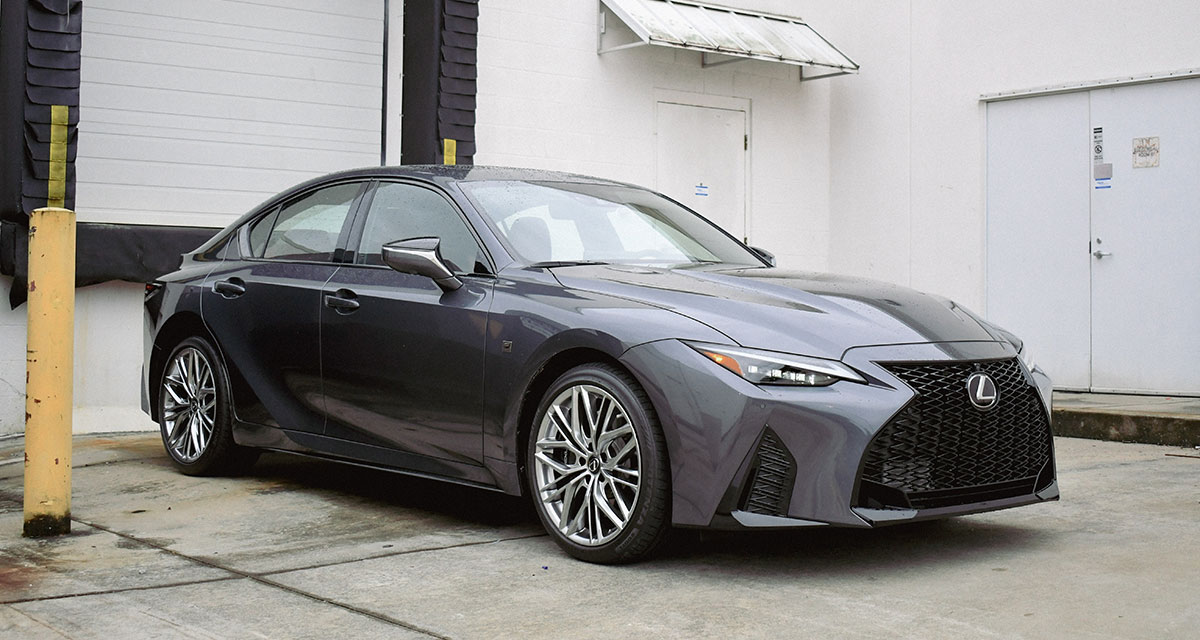
The IS 500 weighs just under 3,900 lbs, packs almost 400 lb-ft of torque and delivers 472 horsepower. Let those specs sink in because they’re important. Realize the IS 500 is the least expensive entry into the 5.0L Lexus V8, and also the lightest besides a triple-digit RC F special edition. This is an extremely fast car, and the only thing rivalling the performance is how it sounds.
One note on a polar opposite topic: On long stretches of highway with my manners in check, the IS 500 delivered more than 27 MPG at 70-75 MPH. In combined driving and even with my V8 love affair in full swing, I still managed 16.7 MPG. Once the novelty has worn off, and if you ever somehow get sick of acceleration, 18-20 MPG combined in day-to-day driving seems realistic.
For a car like this, ride quality and compliance is very good with no complaints. Over broken pavement, it can be a bit jarring but it never loses composure or becomes intrusive. It is, after all, still a Lexus — and “just an IS with a V8” if you want it to be that.
Handling and Balance
Learning that a V8 engine was coming back to the IS naturally makes you fixated on power. You immediately start thinking about acceleration, noise and spec sheet battles. But here is where those GS F analogies start to creep in: The IS 500 is a brilliant car to drive, even when you’re not going fast.
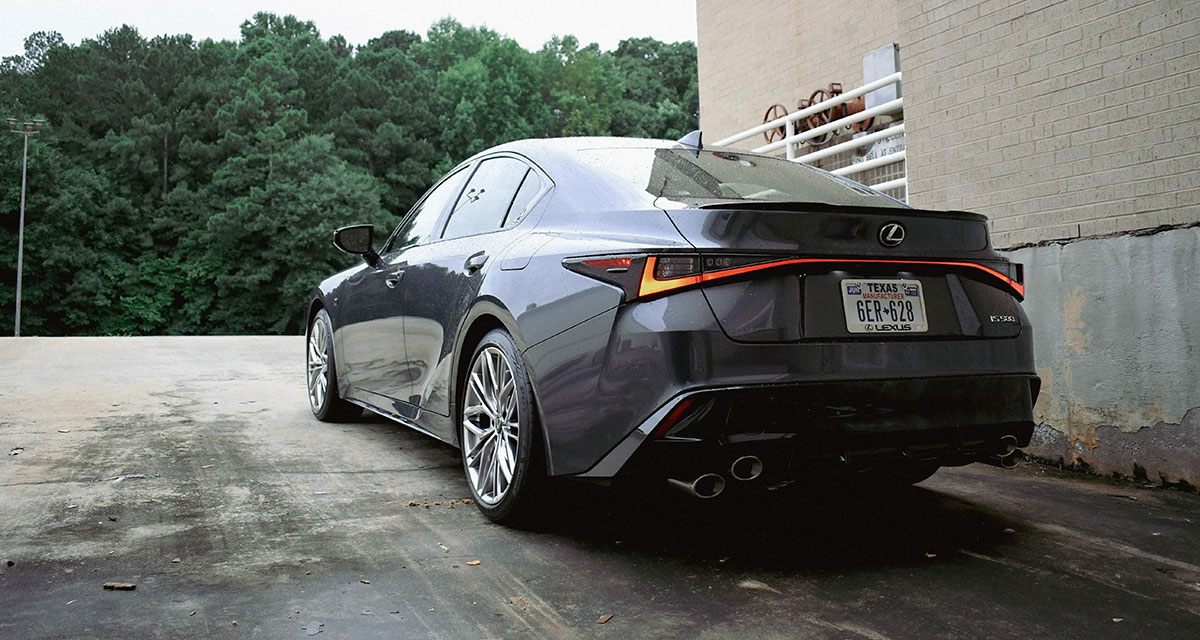
It’s not front heavy. It doesn’t plow and become twitchy in spirited driving. There was a charm in the GS F where the more you drove it, the more you felt in control. The IS 500 has that too, and might even be better due to lower weight. While you can say “New N” is not a TNGA platform and the 5.0L V8 traces its roots back to 2008, has Lexus performance driving actually gotten better than this? I don’t think so.
The original IS F was something of a sledgehammer, but still a very good car to drive. The IS 500 is more precise and controlled – and even faster. No IS F owner will be disappointed with this car.
The RC F might be the IS 500’s closest living relative, but there are some things that do make the IS 500 inherently better: it has a touchscreen, feels more balanced, rides better on broken pavement. The IS is just better behaved and more well rounded.
This car is the GS F’s better looking, more athletic, more modern younger brother — oh, and he’s $30k less expensive to date, too.
Pricing:
When Lexus delivered the IS 500, I still didn’t know the price of the car. Living with and driving the IS 500 over a few days, I figured the model I was driving would cost between $65k to $70K USD — and it was worth it. Keep in mind this was the Premium Grade with loaded-as-standard triple-beam LED headlights, moonroof, Mark Levinson audio and all of the upgrades short of the Launch Edition.
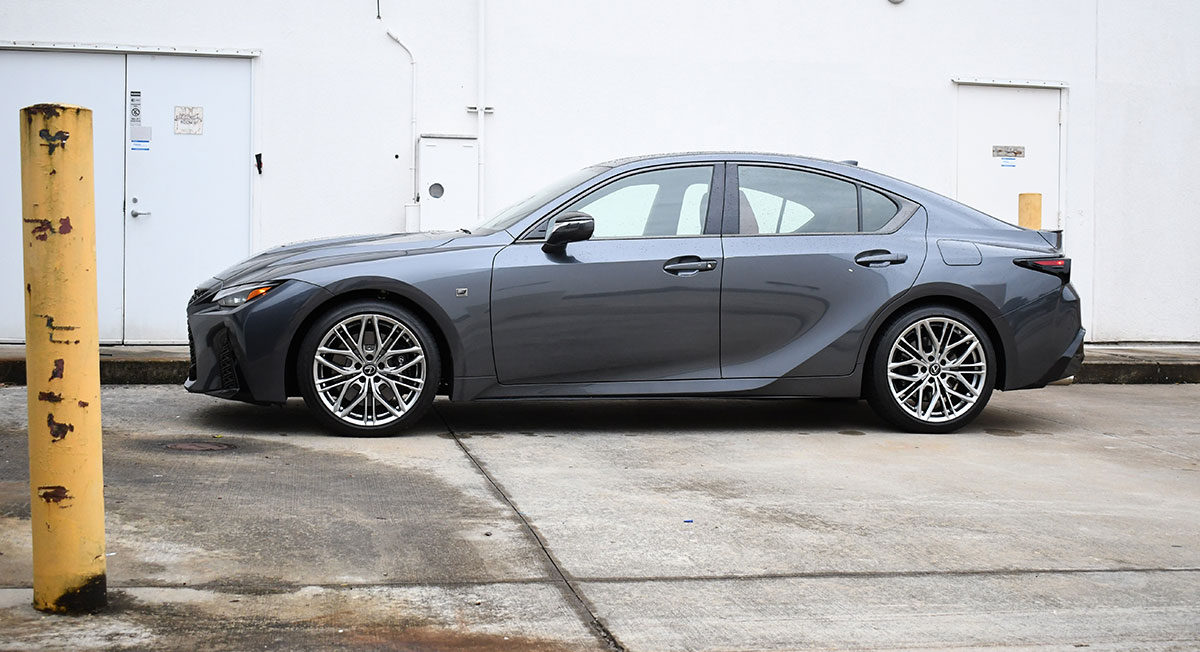
Lexus provided the pricing in advance of writing this article, and frankly, I was shocked. The IS 500 starts at just $56,500 USD. Now I’m a Lexus Enthusiast, so of course I want those little luxury touches that the Premium Grade provides, but even then… $61,000? Lexus, are you making any money on these or just having fun? Perhaps they are making a little more profit on the Launch Edition and its $67,400 MSRP, but those are already all spoken for.
It really is hard to articulate what an incredible value this car is. The exterior design is gorgeous and I barely touched on it. The wheels, exhaust and hood bulge set it apart from the standard IS, and I did have a few discerning eyes who knew what the car was. The way it accelerates, rides and drives will make this one of the all-time iconic Lexus performance cars. The V8 is unlike anything else in its class, and it has everything to do with why this car is so great. For under $57k USD to start? 😳
Summary
More playful than the LC 500, a better balanced package than the RC F, more powerful than the original IS F, and significantly less expensive than the GS F, the IS 500 F SPORT Performance feels like it opens one chapter of Lexus performance and closes another.
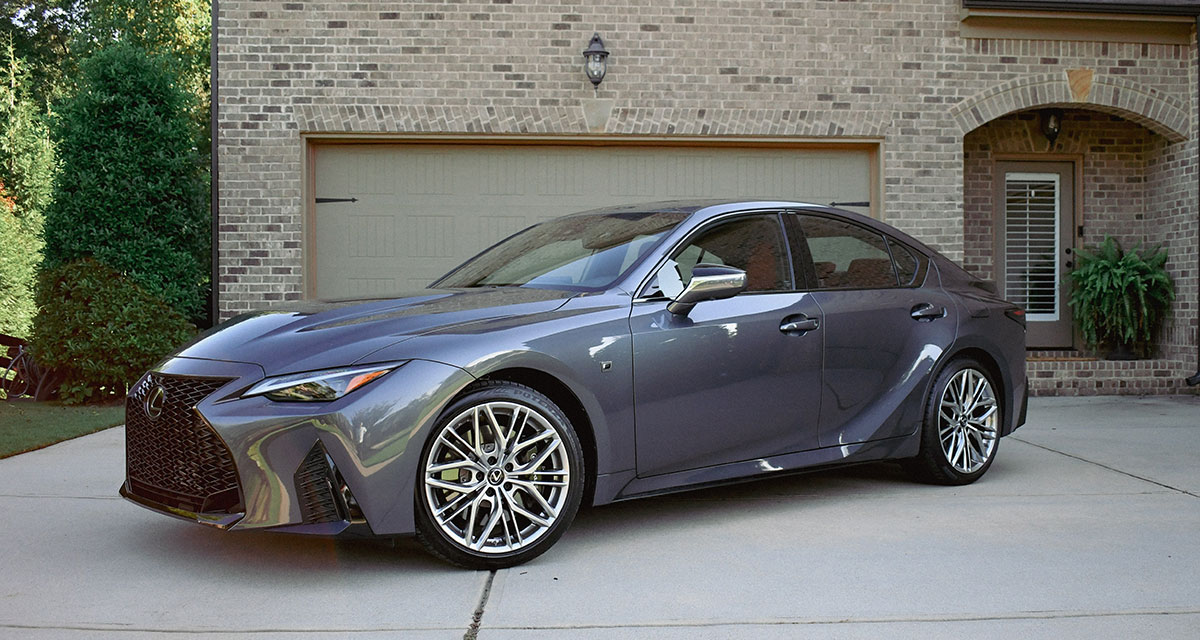
Short of the LFA, Lexus F cars have always come with the 5.0L V8. F badge or not, I think the IS 500 is the best of them no matter what it’s called. If this car isn’t a “full F,” it’s mostly because Lexus’ vision of performance in the future has changed. At the same time, the IS 500 is the end of an era for Lexus because the future just has to look different (and likely electrified).
So is it an IS F? No, it’s not. Lexus mentioned that true F cars have more hardcore performance upgrades (launch control, Brembo brakes, track-focused suspension enhancements, active weight reduction, etc) whereas F SPORT Performance lives between the maximum F and the F SPORT trim level. The beauty of the IS 500 is the combination of the best Lexus’ rear-wheel drive platform and one of their iconic powertrains in a way that doesn’t actually need to be more hardcore. It’s light, it’s athletic, it’s extremely fast and it’s gorgeous. I can see an IS F being shorter to stop, faster to launch and grippier to track, but would those things make it… better?
To me, no. The IS 500 F SPORT Performance formula delivers what is probably Lexus’ overall best driving car – even edging out the GS F – and that’s because they used their best hardware to build it. As the curtain closes on cars like this and Lexus’ first chapter of F — or the 5.0L V8 — comes to a close, there is simply no better sendoff.
Pros
- Balance, poise, agility, luxury and a naturally aspirated V8 in one well-rounded package
- Understated sleeper status, but with thoughtful details that distinguish it from the standard IS
- The lowest cost of entry for Lexus’ 5.0L V8 – and possibly the best package for it
- Exterior design
- Unbeatable value
- Impressive highway fuel economy
Cons
- Apple CarPlay can be non-responsive or laggy
- Some new interior and exterior colors over the rest of the IS range would be welcome additions
Specifications
2022 Lexus IS 500 F SPORT Performance
Premium Grade
Exterior: Cloudburst Gray
Interior: Circuit Red Nuluxe with Geometric Trim
Options: Premium Paint Charge: $500
Price as tested including delivery, processing and handling ($1,075): $62,575.



